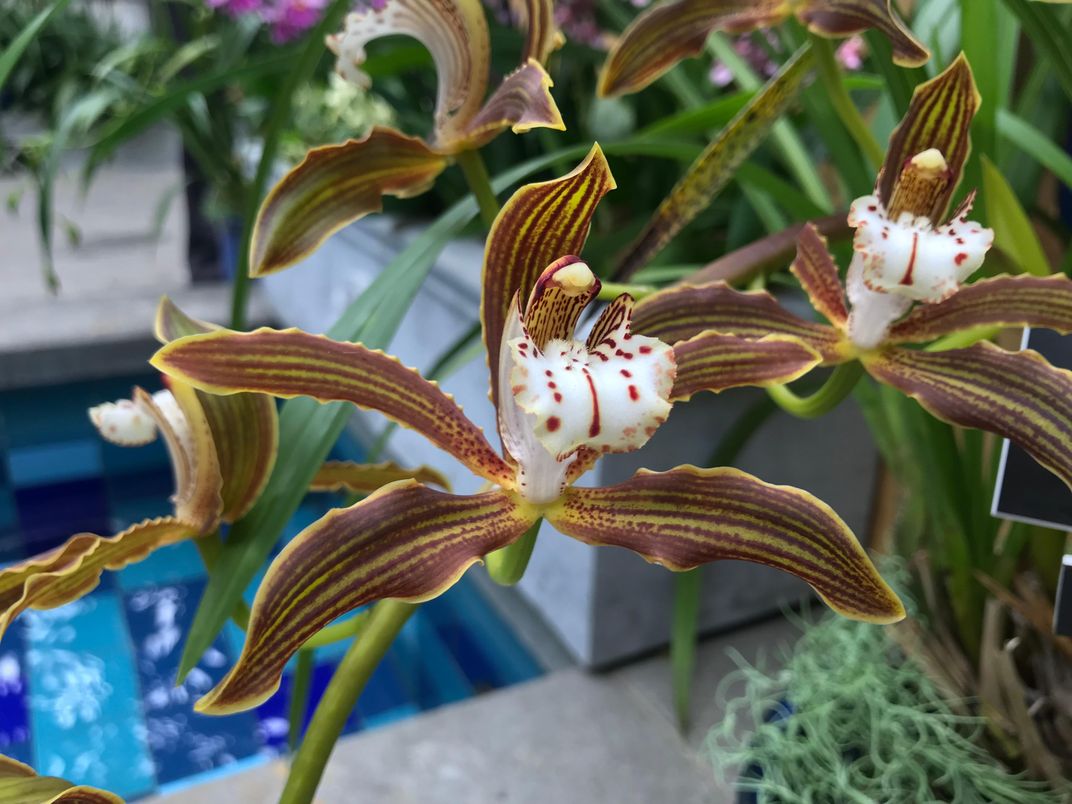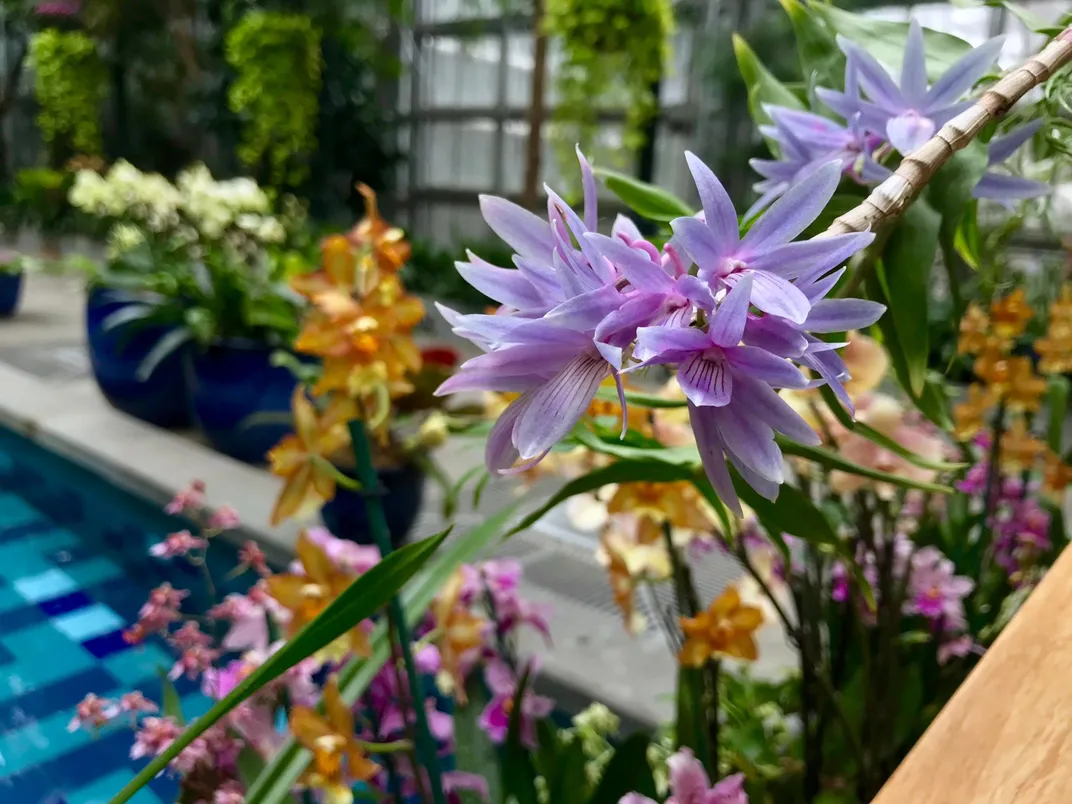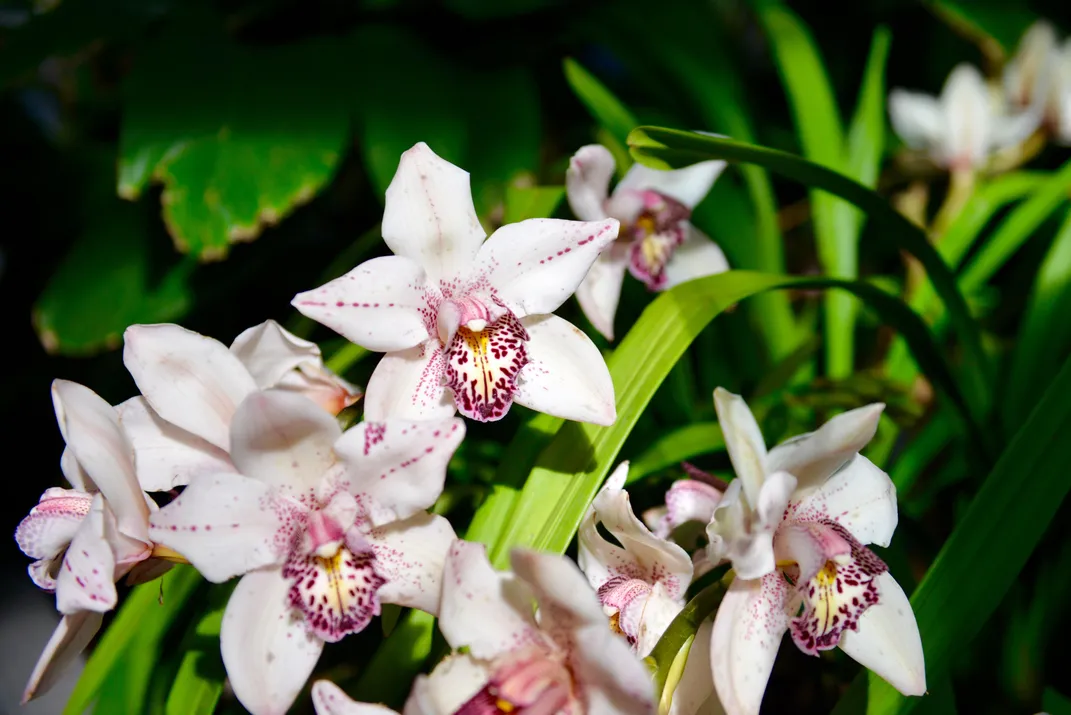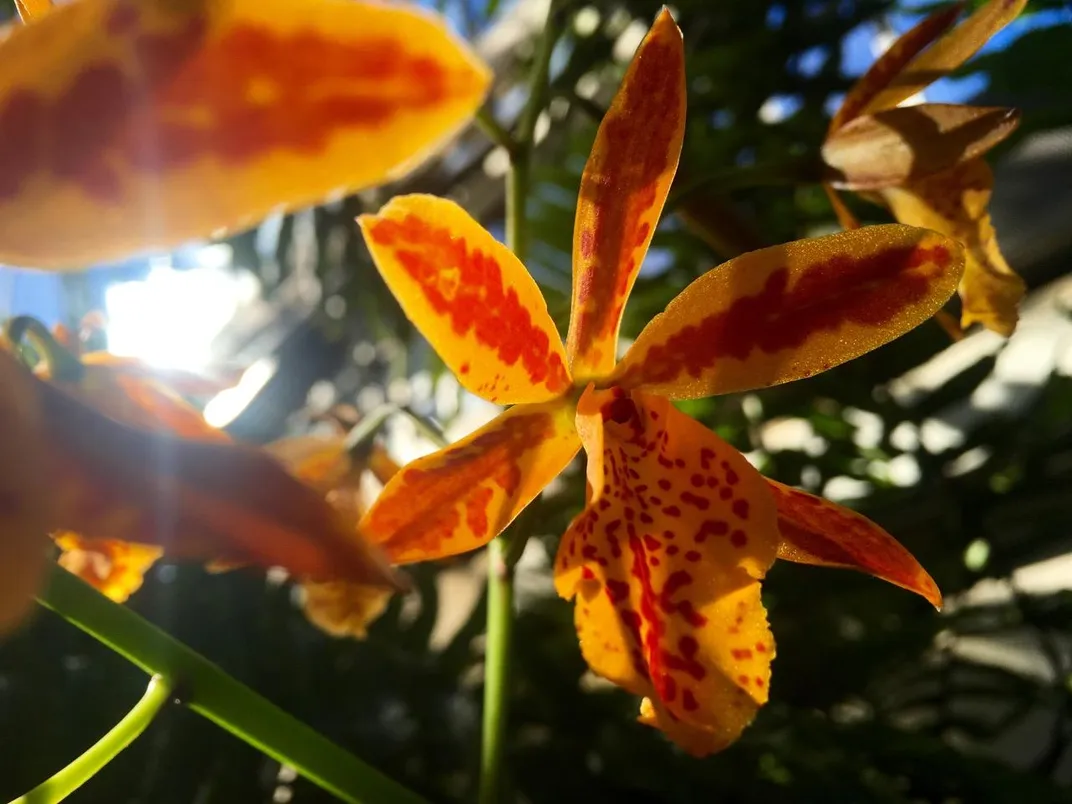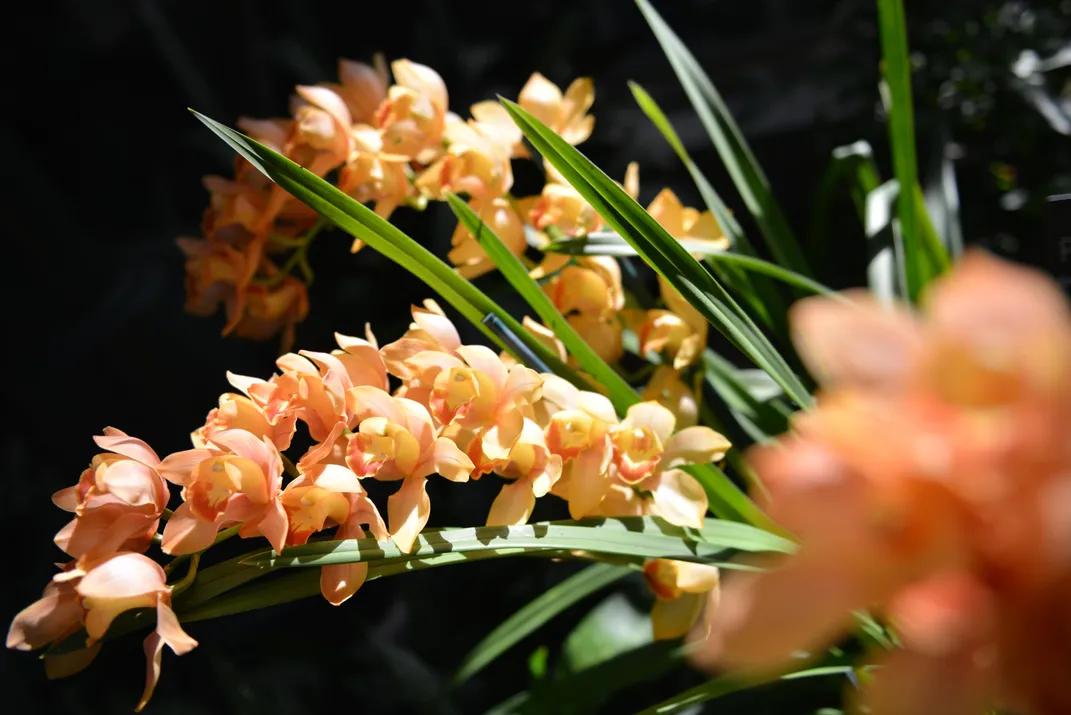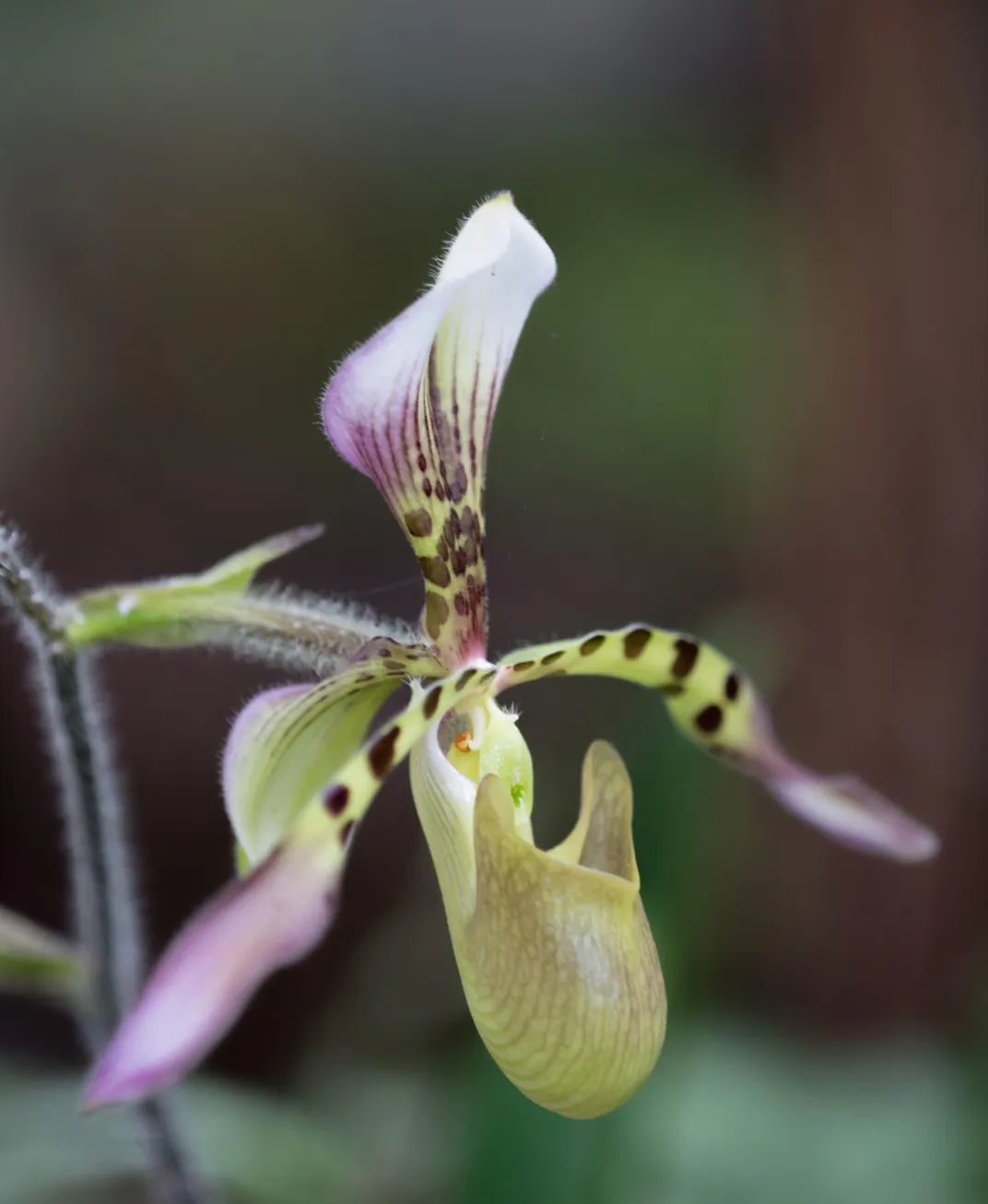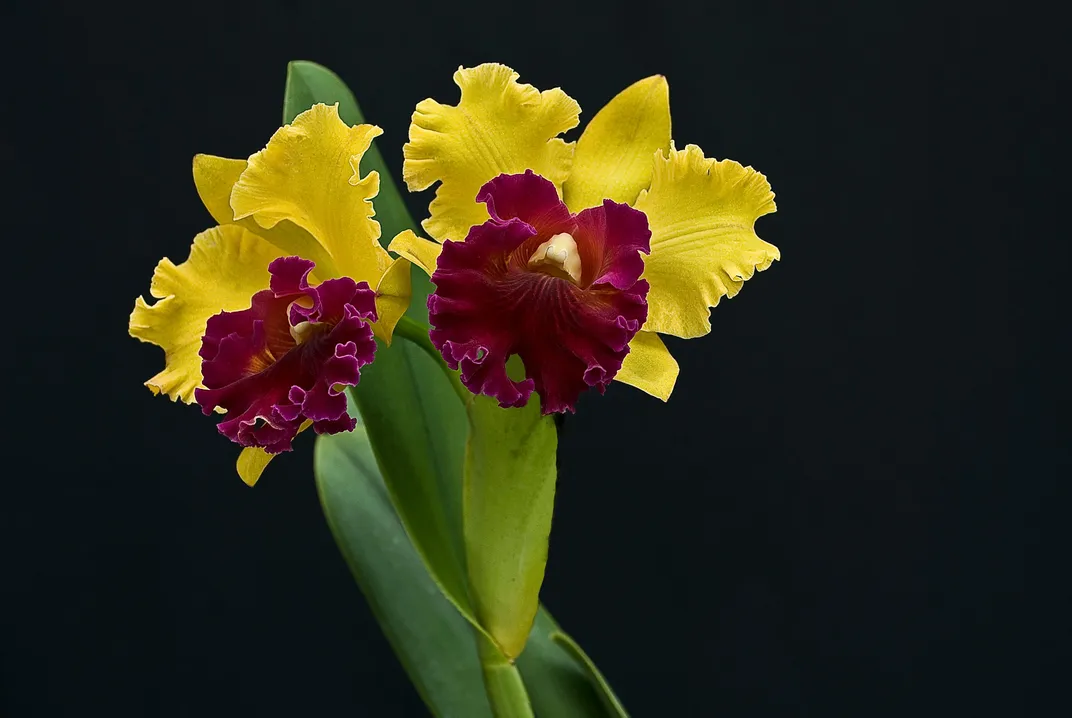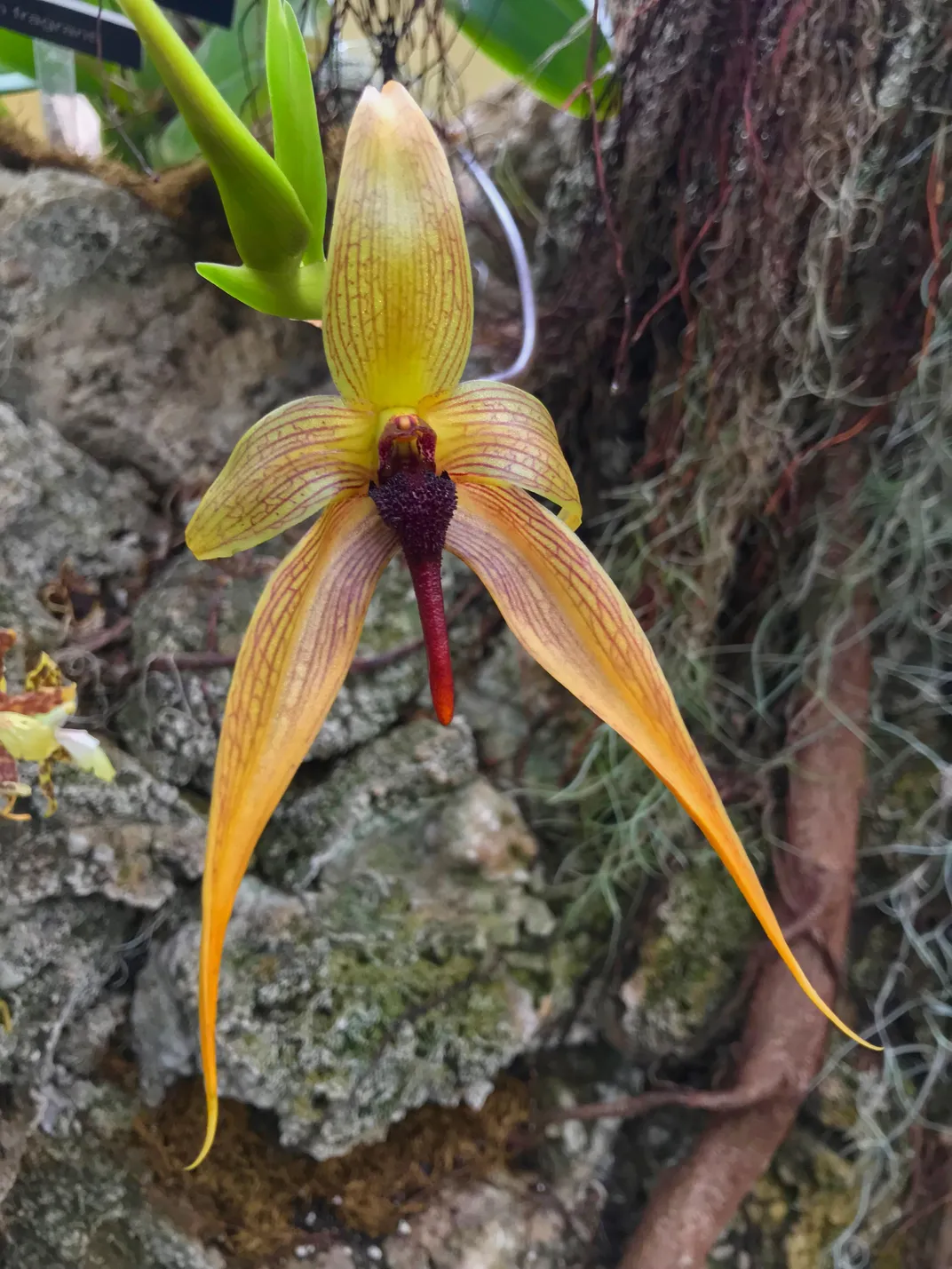Why the Conservation of Orchids Is No Simple Matter
Smithsonian’s Sidedoor podcast visits with researchers working to understand the conditions these threatened plants need to grow
:focal(1192x691:1193x692)/https://tf-cmsv2-smithsonianmag-media.s3.amazonaws.com/filer/95/9e/959e9873-1a0b-4def-85f1-7d563a398f7c/seedpacket_mmccormick.jpg)
Orchids are the ultimate divas of the plant world, and not just the flamboyant ornamental ones favored by florists and horticulturalists. There are roughly 30,000 different species of orchid—more than any other flowering plant family—and some of them are so finicky they will spend a decade or more underground, just waiting for the precise conditions to make an appearance.
Native to a variety of habitats on every continent but Antarctica, they are commonly used in cosmetics and perfumes, and even ground into snack cakes in some parts of the world. Vanilla is an orchid familiar to every baker. Orchids by the thousands go on view annually in Washington, D.C. when the U.S. Botanic Garden and the Smithsonian Gardens partner to debut rarely seen orchids from the two collections.
(Listen to this new episode of the Smithsonian podcast Sidedoor, which explores how scientists from the Smithsonian Environmental Research Center are trying to reestablish orchids, like the small whorled pogonia, in the wild.)
Despite their ubiquity, orchids are extremely vulnerable to habitat loss and over harvesting. Populations are usually small, sometimes just one or two dozen plants, and they live in very limited ranges where they require very specialized pollinators. Orchids that grow in the wild are also fully dependent on fungi to survive early in their life cycle. The complexity of their ecology poses steep challenges to conservationists.
It can take decades to learn what an orchid needs, but some species may not have that long. In the United States and Canada alone, roughly half of all native orchids are threatened in at least some part of their range. That’s why the North American Orchid Conservation Center (NAOCC) is building a national network of repositories to bank orchid seeds and the fungi found in their roots. Their goal is to store the genetic material needed to conserve all of the more than 200 species of orchids native to the U.S. and Canada.
“There are international efforts at seed banking, but few people have focused on orchids, because they don’t know much about their ecology,” says Dennis Whigham, head of the Plant Ecology Lab at the Smithsonian Environmental Research Center (SERC) in Edgewater, Maryland.
In 2012, Whigham founded NAOCC in collaboration with the U.S. Botanic Garden. They have developed standardized protocols for collecting orchid seeds and roots, and they are working with other groups around the country to establish regional repositories that conservationists and orchid enthusiasts can contribute to.
Their goal is to have collections of every species from each state. Within each state, they want collections from every region where a species grows, because the same species may be associated with completely different fungi depending on its environment.
“Doing this at a national level is what’s really important,” says Kingsley Dixon, foundation director of science at Kings Park and Botanic Garden in Western Australia. With the exception of the Millennium Seed Bank, which aims to preserve seeds from all the world’s plants, orchid seed banks have thus far been run at the state level or independently by universities and botanic gardens.
/https://tf-cmsv2-smithsonianmag-media.s3.amazonaws.com/filer/49/54/4954fc73-6966-4b30-af9b-8cff7f86eef3/melissa_mccormick_and_tipularia_byyinima_serc.jpg)
Dixon says the NAOCC model is a significant step for orchid conservation. He is replicating it in Australia, and working with China, Saudi Arabia and Southeast Asian countries to follow suit. “We want to take it from the sporadic ad hoc approach to a more systematic approach to conserve all orchids in perpetuity,” he says. “It would be great to have a global NAOCC.”
Banking seeds and fungi is just the first step, however. An enormous amount of research remains to make orchid conservation successful. Unlike seeds of other plants, orchid seeds do not contain the nutrition they need to sprout. They get it from fungi.
Many continue to consume fungi through their roots even after they emerge from the ground and begin making sugar through photosynthesis. Some orchids need one species of fungus to sprout and a completely different one to survive as an adult. Some species can live happily off fungi underground for years until something inspires them to emerge from the soil, perhaps another fungus. Still other orchids require fungi only found in living tree roots. Their complexity is why so little is known about them.
/https://tf-cmsv2-smithsonianmag-media.s3.amazonaws.com/filer/5d/dd/5ddd8db7-ddcd-4eee-ab94-458e9f25e3aa/calopogon_tuberosus1_mkm.jpg)
“First you have to find the fungus,” says Melissa McCormick, a botanist who works with Whigham in the SERC plant ecology lab, “then you have to figure out what it is, and what it needs to survive, which is of course, what the orchid needs to survive.”
McCormick is isolating the DNA for nearly 800 fungi samples that the lab has cultured from roots collected by NAOCC collaborators. The samples represent about 100 different orchid species from different regions. Because orchids are so specific to their environments, plants of the same species often have different fungi depending upon where they were collected. According to Whigham, 99.9 percent of the fungi McCormick has sequenced so far are new to science.
So much about these plants is new to science. Even after identifying the fungi an orchid requires, getting the seeds to grow in the lab has proven difficult. SERC plant ecology lab’s head lab technician, Jay O’Neill has tried to propagate the federally threatened small whorled pogonia for two decades. Seeds that have lived in a petri dish with its associated fungi for nearly seven years have swollen as if they were about to germinate. But that’s as far as it went. Something must be missing.
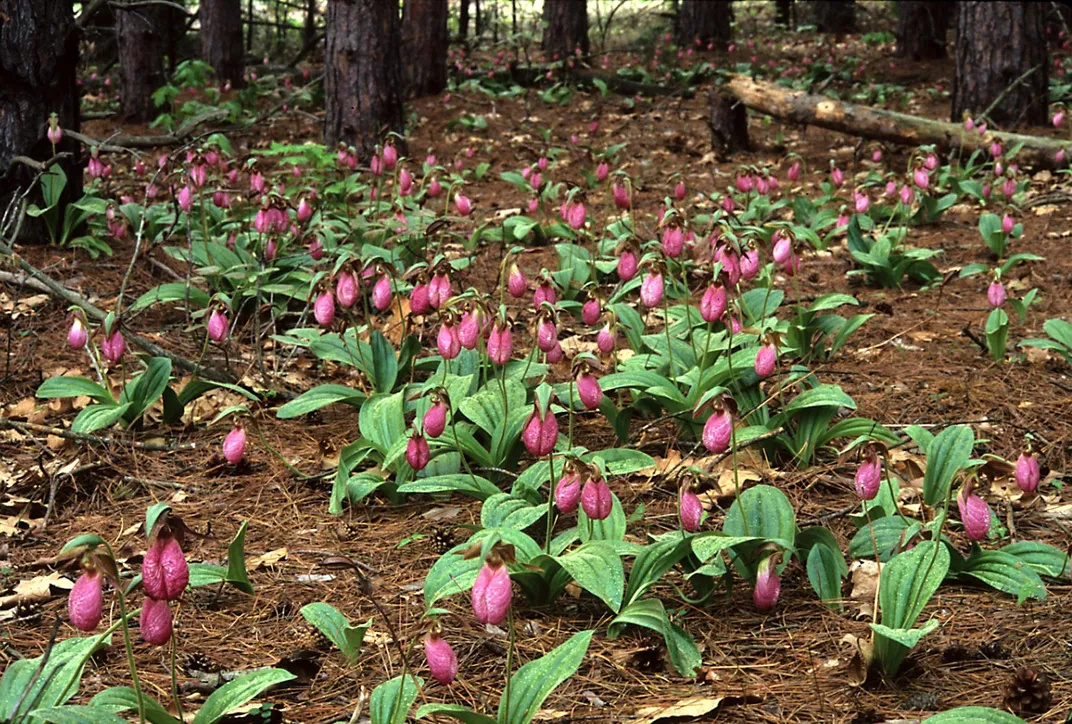
It hasn’t been all bad news, however. O’Neill has successfully germinated half of the ten native species found in the forest at SERC. The team has even introduced one of them, the rattlesnake plantain, into experimental plots in the forest. And like nearly everything else with orchids, wild seeding required the development of a completely new technique. Because they contain no nutrition such as a bean or fruit, orchid seeds are tiny. Tens of thousands of them amount to about a half-teaspoon of dust. To ensure the seeds stay put for as long as it may take to germinate, the lab developed seed packets that can last for years if need be. Their packet technique is now being used all over the world.
Packaging, of course, is only part of it. Divas to the very end, location is paramount to an orchid. “If you’re going to plant orchids, you’re going to want to plant them where the fungi is,” says McCormick. She is now developing techniques for finding target fungi in soil samples. That’s still a work in progress.
/https://tf-cmsv2-smithsonianmag-media.s3.amazonaws.com/filer/a4/d0/a4d00b5a-51c9-426c-a460-eb942d4bcccf/cleistesiopsis1_mkm.jpg)
Very few people are aware of the difficulty of conserving orchids and returning them to the wild, or the vulnerability of healthy populations. Commercial orchids sold by florists and in grocery stores are either varieties that can be cultured in a greenhouse with sugar instead of fungi, or they are hybridized to grow without it. Uninformed gardeners and hobbyists frequently assume they can collect an orchid from the woods only to have it die shortly after being dug up.
If scientists could learn to propagate orchids, they could be produced commercially, or grown by home gardeners. “That’s one of our long term goals,” Whigham says. “Once we know how to propagate all the native orchids, then you don’t have to go dig them up to have them in your garden.”
/https://tf-cmsv2-smithsonianmag-media.s3.amazonaws.com/filer/4f/49/4f497082-35cb-46b2-ac83-70000207a149/calopogon_tuberosus_alba_mkm.jpg)
